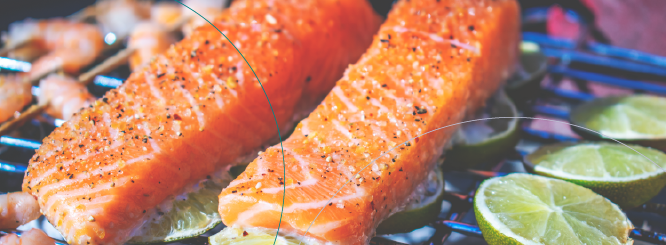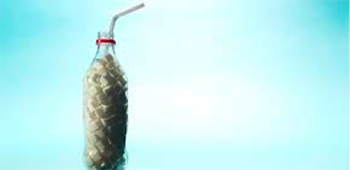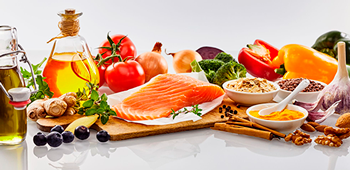
One of the first habits we develop at an early age is how we eat, from the food we consume to the amount of meals we have throughout the day. These habits become patterns as the years go by and some of them may be healthy, like drinking a big glass of water as soon as you wake up, while others are more harmful to your health.
Bad eating habits are one of the most common struggles throughout the world with 30% of its total population struggling with obesity or obesity-related illnesses[1].
One of the reasons many people want to change their diet is because they’re struggling with high blood pressure. Most of the foods a person tends to consume are highly processed or include a ridiculous amount of salt or added sugars, and while consuming those foods once in a while is not all that bad, eating them regularly does take a toll on a person’s health. At LIMARP®, our medical team counts with licensed nutritionists that can help you achieve your goals. They go over your medical history and talk with you about your expectations to create a nutrition plan that covers all your needs.
This article will focus on the foods you can include in your diet to lower your blood pressure, as well as a quick dive into what causes your pressure to increase. Each case is different and it’s important to keep in mind the dietary restrictions you may have. However, if you suffer from any underlying issue that should be addressed in a more thorough way, we recommend you speak to your doctor before implementing any drastic changes to your lifestyle.
What Causes High Blood Pressure?
By definition, blood pressure is the measure of force against the artery walls as the heart pumps blood. There are two different types of readings:
- Systolic: The maximum pressure during a heartbeat.
- Diastolic: The minimum pressure during a heartbeat.
Normal blood pressure is considered 120 (systolic) over 80 (diastolic). Any reading over 140/90 is considered high blood pressure. Blood pressure is a great indicator of overall health because if it’s high, it can lead to heart problems and when it’s too low, it can cause dizziness, fainting, and deprive the body of oxygen, leading to heart and brain damage.
There are many risk factors for high blood pressure and some of them are manageable [3], such as:
- Smoking
- Processed foods
- Drinking too much alcohol
- Being overweight
- Not exercising
Other risks factors that are not as manageable are:
- Diabetes
- Kidney disease
- Having family with high blood pressure
Each patient’s case is different and if you have high blood pressure, you should contact your doctor to see which is the best solution for you in order to lower it. For some, changing the foods in their diet may be a possible, drug-free option to help with high blood pressure. However, keep in mind that you should contact a nutritionist before implementing extreme changes to the way you eat, especially if you’re not sure where to begin.
Next, we’ll provide some of the foods that you can include in your diet if you’re looking to lower your blood pressure. According to the CDC[2] (Centers for Disease Control and Prevention), “permanently improving your eating habits requires a thoughtful approach in which you reflect, replace, and reinforce”. These last three words are important because they’re a reminder for you to be patient with your progress and that while quick results may be satisfying, they’re not long-lasting. They’re also not healthy and the point of reversing bad eating habits is to implement a sustainable diet that benefits all aspects of your health.
Once you meet your nutritionist, they will ask about your eating habits, all of them, and also if you have any triggers that may drive you to unhealthy patterns, such as binging. When they finish their examination, they will replace some of the foods you consume with healthier options and reinforce a routine that consists of better habits.
Lowering Your Blood Pressure: What to Look For and What to Avoid
Here’s a list of foods that are great for lowering blood pressure and that also make up what’s known as a DASH diet. This diet aims to include 4,700 milligrams of potassium while simultaneously reducing sodium. A 2020 study[3] proved that following this diet can help a person reduce their blood pressure levels.
- Citrus fruits, such as grapefruit, oranges, and lemons.
- Salmon and other fatty fish because of omega-3 acid found in them.
- Swiss chard due to its magnesium levels.
- Beans and lentils, a study[4] showed that they significantly lower high blood pressure.
- Carrots, celery, and tomatoes.
- Greek yogurt.
- Pumpkin and chia seeds.
Now, here’s a list of foods you should avoid to reduce the risk of increasing your blood pressure:
- Deli meat
- Frozen pizza
- Canned products, such as soups
- Processed foods with trans or saturated fat
- Alcohol
Contact Us to Learn More
If you’re looking to lower your blood pressure by changing the food in your diet, schedule an appointment with one of our doctors. We can help determine the right treatment for you. Contact us online anytime or give us a call at (619) 373-0229.
References
- [1] “Most Obese Countries 2022”. https://worldpopulationreview.com/country-rankings/most-obese-countries. (Accessed December 18, 2022).
- [2] “Improving Your Eating Habits”. https://www.cdc.gov/healthyweight/losing_weight/eating_habits.html. (Accessed December 18, 2022).
- [3] Christina D Filippou, Costas P Tsioufis, Costas G Thomopoulos, Costas C Mihas, Kyriakos S Dimitriadis, Lida I Sotiropoulou, Christina A Chrysochoou, Petros I Nihoyannopoulos, Dimitrios M Tousoulis, Dietary Approaches to Stop Hypertension (DASH) Diet and Blood Pressure Reduction in Adults with and without Hypertension: A Systematic Review and Meta-Analysis of Randomized Controlled Trials, Advances in Nutrition, Volume 11, Issue 5, September 2020, Pages 1150–1160, https://doi.org/10.1093/advances/nmaa041
- [4] Jayalath VH, de Souza RJ, Sievenpiper JL, Ha V, Chiavaroli L, Mirrahimi A, Di Buono M, Bernstein AM, Leiter LA, Kris-Etherton PM, Vuksan V, Beyene J, Kendall CW, Jenkins DJ. Effect of dietary pulses on blood pressure: a systematic review and meta-analysis of controlled feeding trials. Am J Hypertens. 2014 Jan;27(1):56-64. doi: 10.1093/ajh/hpt155. Epub 2013 Sep 7. PMID: 24014659; PMCID: PMC5391775.


